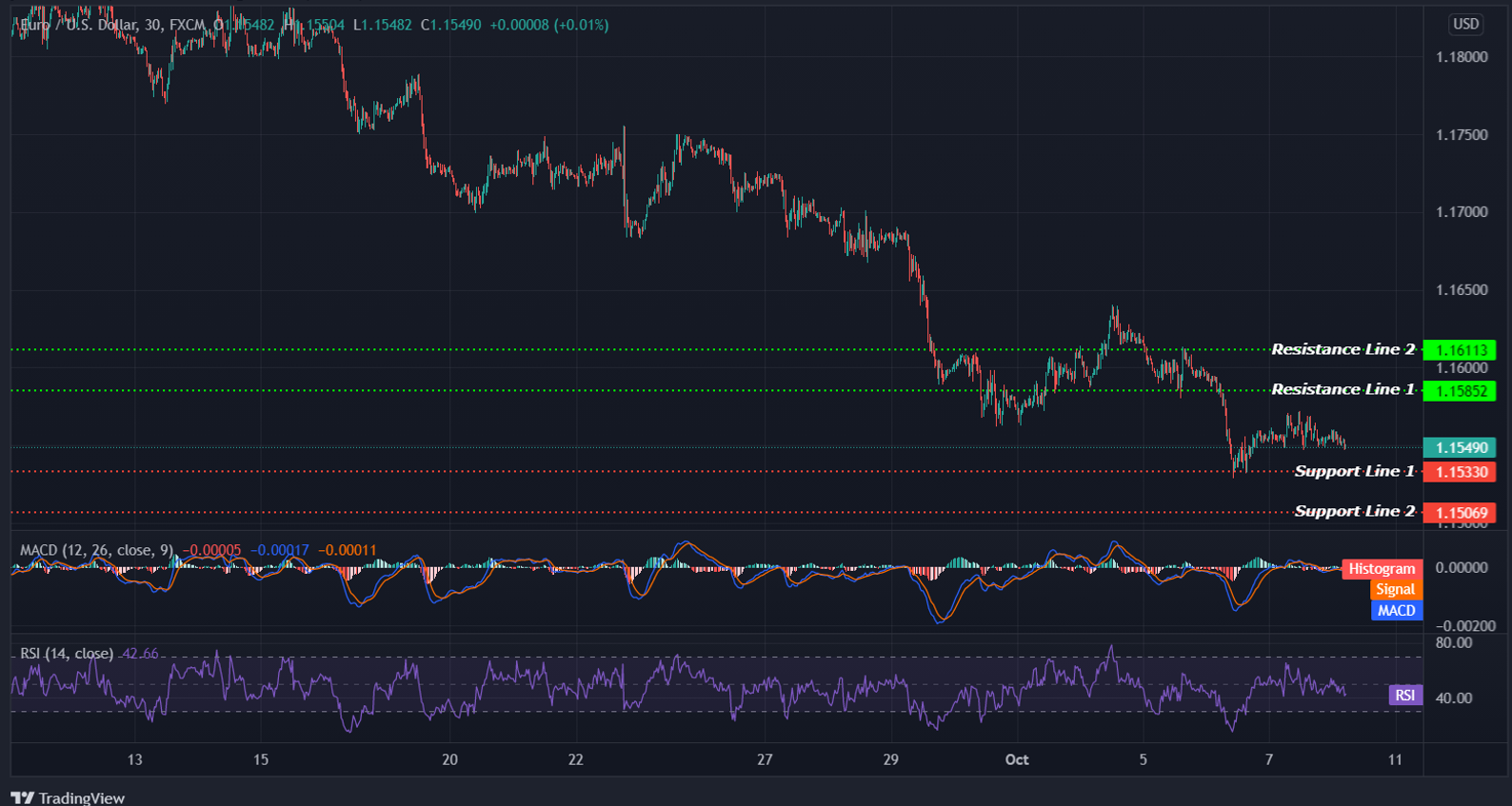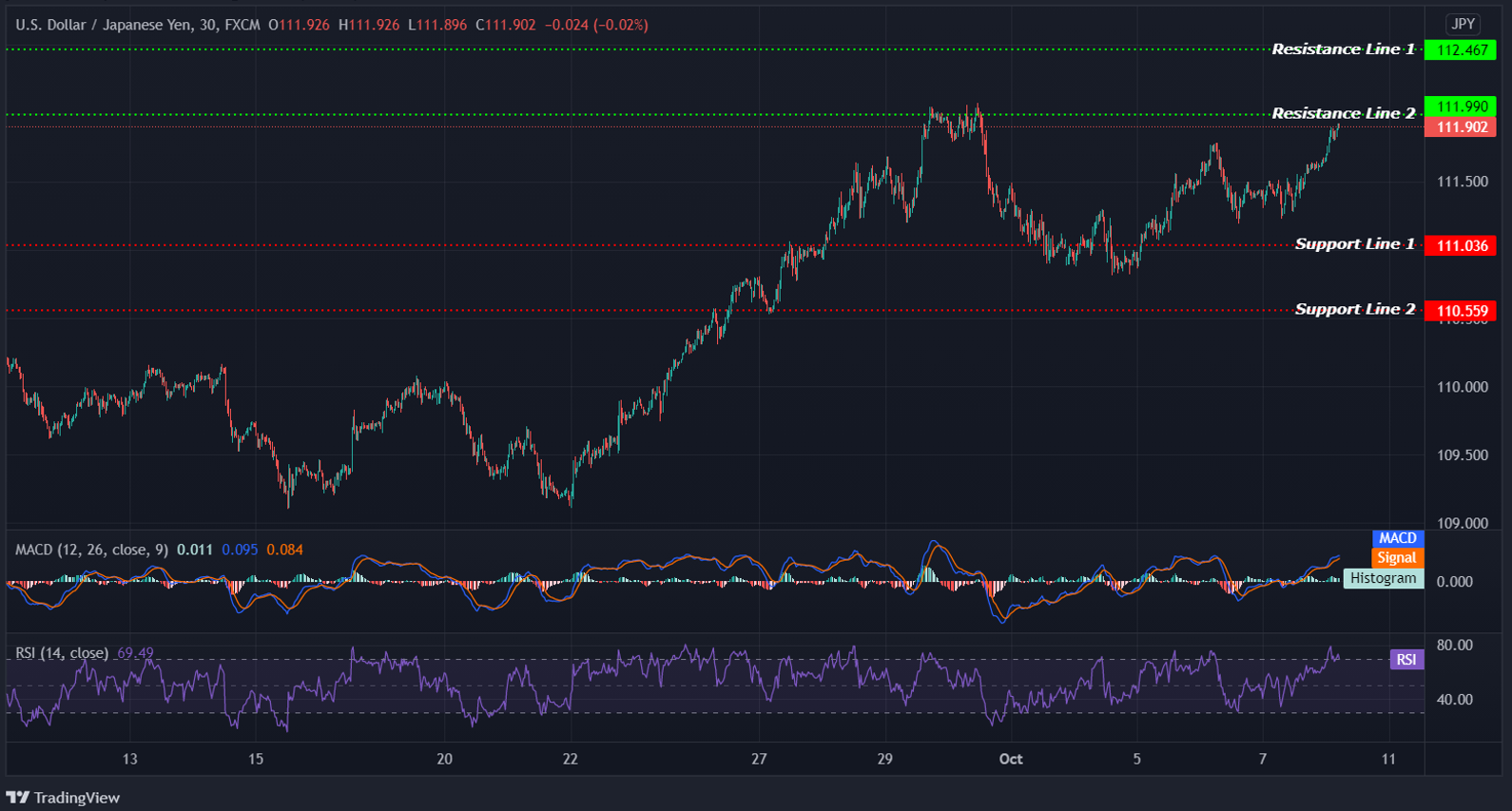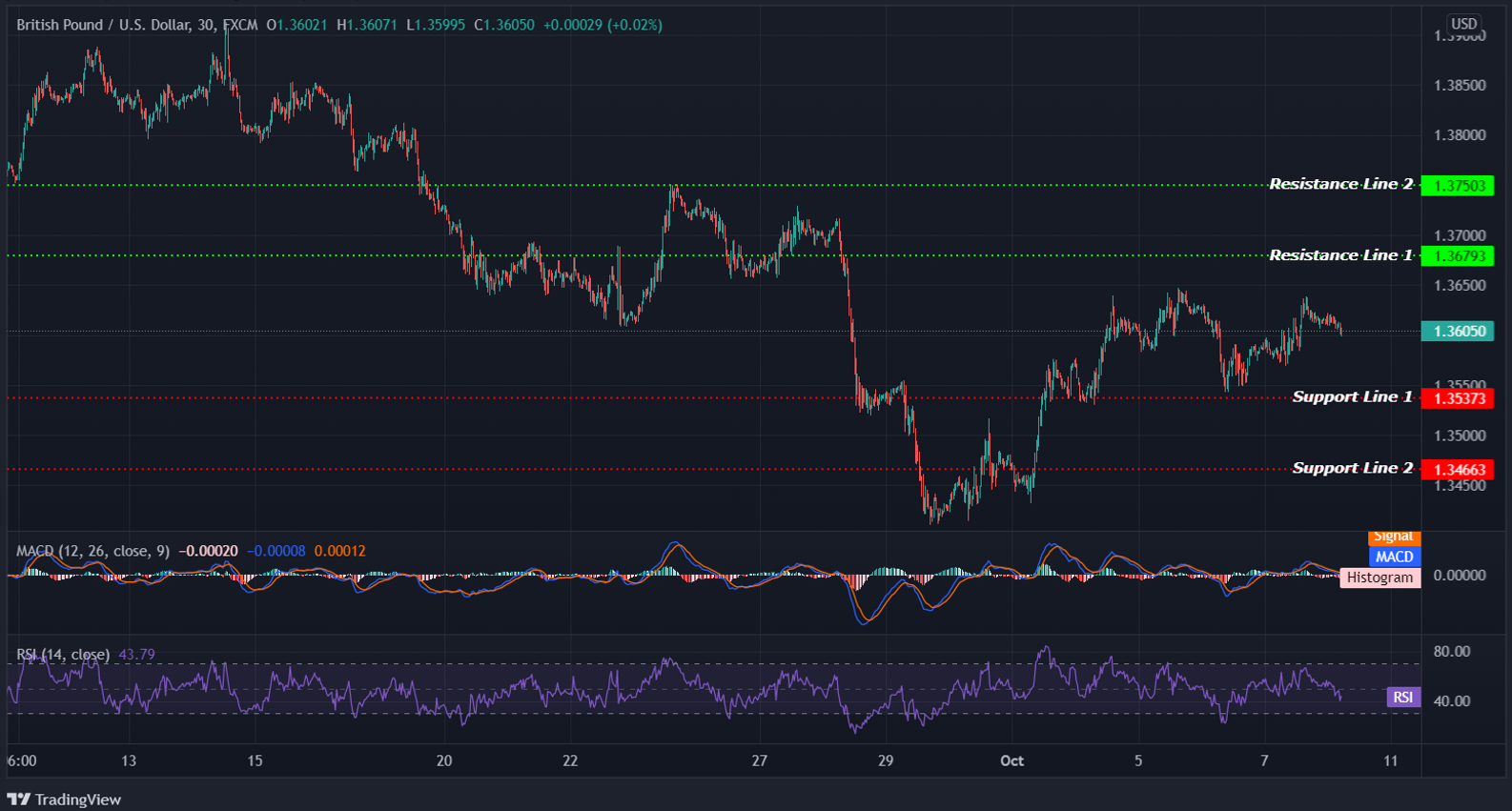INTRADAY TECHNICAL ANALYSIS 8 OCTOBER (observation as of 05:30 UTC)
[EURUSD]
Important Levels to Watch for:
- Resistance line of 1.15852 and 1.16113.
- Support line of 1.15330 and 1.15069.
Commentary/ Reason:
The euro consolidated around $1.15490, after dipping on Wednesday to a 14-month low of $1.15294.
The euro was under pressure from weak Thursday’s Eurozone economic data and a report the ECB may implement a new bond-buying program.
The ECB is reportedly studying a new bond-buying program, which would be negative for the euro. The new program would complement the open-ended QE plan that is currently purchasing 20 billion euros ($23.1 billion) in debt every month and would prevent market turmoil when the ECB’s PEPP plan gets phased out in March of next year.
Meanwhile, the safe-haven dollar was supported amid improved risk sentiment, and as traders awaited clues on the pace of Federal Reserve policy normalization from a closely watched monthly payrolls reports. The employment figures are expected to lead the Federal Reserve to indicate at its November meeting when it will begin tapering its massive stimulus program.
The EUR/USD has stalled at the 1.154 price level as price action has begun to flatten after an extended sell-off. The pause may be short-lived before further downside beyond this zone of support. The next few trading sessions will determine whether sellers remain active in the pair.

[USDCHF]
Important Levels to Watch for:
- Resistance line of 0.93112 and 0.93293.
- Support line of 0.92526 and 0.92345.
Commentary/ Reason:
The dollar advanced against the Swiss franc on Friday, rose 0.27% to 0.92747, hovered just below a one-week high it touched on Monday.
Rising bets for an early policy tightening by the Fed continue to act as a tailwind for the greenback and lend some support to the USD/CHF pair. Investors now seem convinced that the Fed would begin rolling back its massive pandemic-era stimulus as soon as November. The markets might have also started pricing in the possibility for a Fed rate hike move in 2022 amid worries that the recent surge in crude oil/energy prices will stoke inflation.
The risk-on impulse has undermined demand for the traditional safe-haven Swiss franc. The global risk sentiment witnessed a dramatic turnaround after Russian leaders reassured Europe on gas supplies, while China’s Evergrande concerns eased and the U.S. federal debt ceiling extension.
The USD/CHF pair trades with clear positivity to move away from 0.925 level, reinforcing the expectations of continuing the bullish trend, and the way is open to achieve our main waited target at one week high of 0.9311. The resistance line remains in sight and has been an obstacle to the rally in recent trading.

[USDJPY]
Important Levels to Watch for Today:
- Resistance line of 111.990 and 112.467.
- Support line of 111.036 and 110.559.
Commentary/ Reason:
The dollar edged up 0.26% to 111.902 yen, drifting toward the upper end of the trading range of the past week and a half.
The yen was under pressure after the BoJ on Thursday cut its economic assessment for five of the country’s nine regions due to the summer surge in COVID-19 infections and production cuts from supply shortages.
The next direction of the pair is expected to be controlled by the movement in Treasury yields, as traders prepare for Friday’s jobs report.
The USD/JPY pair has begun to move towards a price ceiling at the 111.99 resistance line, opening way to achieve additional gains that reach 112.46. Bullish conviction appears to be present, however, the question is whether buyers have the appetite to drive new price highs.

[GBPUSD]
Important Levels to Watch for:
- Resistance line of 1.36793 and 1.37503.
- Support line of 1.35373 and 1.34663.
Commentary/ Reason:
The sterling traded marginally lower against the U.S. dollar amidst the uncertainty dominating the markets ahead of the release of the U.S. Non-Farm Payroll data later.
It was last bought at $1.36050.
Fuel shortage problems and renewed Brexit concerns continue to weigh on the pound while the pair also remains undermined by the broad-based U.S. dollar strength.
Traders are positioning themselves ahead of Friday’s U.S. Non-Farm Payrolls report that could offer clues on the timing of a tapering of Federal Reserve stimulus and the start of interest rate hike.
Meanwhile for the UK, comments from new BoE Chief Economist Huw Pill that inflation pressures were proving stickier than initially thought reinforced expectations for a rate hike by February, and perhaps even this year.















